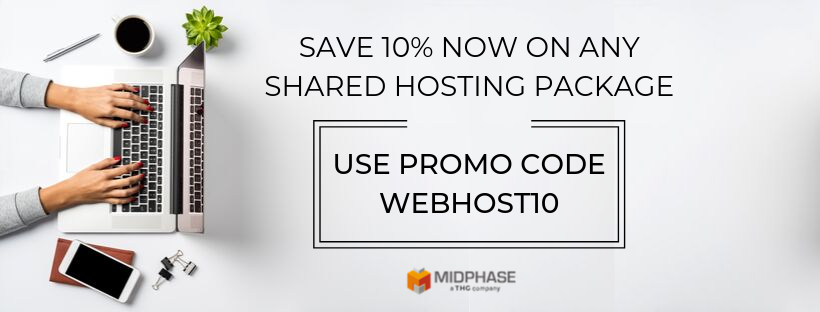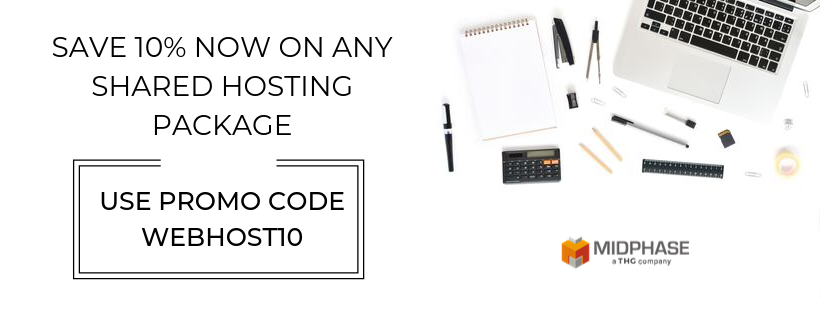
Imagine sitting down at your computer one morning and finding two emails in your inbox from rival companies. Both contain identical discounts for something you’ve wanted to buy. However, one email was sent specifically to you through a branded address. The other has blank To and CC fields and was sent from a Gmail account.
Now think: which company would you feel more enthusiastic about giving your business to?
In the modern age, there’s often very little to distinguish between competing organizations. Dropshipping has helped to slash operating costs and margins, while anyone can create a stylish WordPress site that looks equally slick on desktop and mobile devices. And while the prospect of same-day drone delivery is not quite offered in all locations, it’s easy to ensure that ecommerce products are delivered promptly and safely. Consequently, customer service is one of the increasingly few ways to distinguish between good and great brands.

Making the difference
Email marketing campaigns are at the forefront of truly effective customer relations. An unsolicited email may be the first time a customer has heard of your brand, and first impressions count. Within a matter of seconds, the recipient will have subconsciously decided whether the sender is professional and friendly, or impersonal and anonymous. And if they decide the latter, this email won’t just be ignored. It may be flagged as spam, damaging the sender’s reputation, and reducing the chance of future messages reaching their intended targets.
One of the most important ways in which email marketing campaigns can avoid such negative connotations concerns branded email accounts. Here at Midphase, we include professional email addresses with every purchase of a website domain. As a result, Midphase customers are able to select specific email addresses ([email protected], [email protected], etc).
Why customized email is important:
It instantly identifies the origin of a message.
A customer who’s just placed an order might not associate a Gmail account with their purchase. However, email from [email protected] will immediately be connected to their order or account.
It raises brand awareness.
Every time a consumer sees a brand name, it subliminally reinforces the brand. Email is great for this, particularly when sending out periodic messages about new products or incentives. Customers will gradually start to associate certain brands with particular industries or services.
It’s less likely to fall foul of spam filters.
Any new email account has to build a reputation, and might initially arrive labeled as spam. However, recipient servers are more suspicious of messages from generic senders like Hotmail. A company-branded email establishes a sender reputation quicker.
Choosing a suitable email prefix is another important consideration. It’s fine to have an info@ or sales@ address for general correspondence. However, is this the first impression you really want to create in an email marketing campaign? It’s far better to send messages from a named individual, addressing the recipient directly. Individual emails suggest intimacy and exclusivity and build a connection to subconsciously encouraging people to read on. It’s also advisable for the sender to be a point of contact throughout subsequent customer journeys. This ensures that clients don’t have to communicate with several email accounts in different divisions of the business. That gets old pretty quickly.
Small is beautiful
The other strand of this personalization process involves contacting named individuals one at a time. Having a named recipient in the ‘To’ field immediately creates a sense of identity. Each person won’t know how many other people received the same message, but they’ll know it’s no more specific to them than a billboard or radio advert. Although individual emails take longer to dispatch, they’ll achieve far higher response rates. And automated software tools take the strain out of mass mailings. They can distribute email in response to specific events or when a certain amount of time has elapsed.
More advanced software packages break this down even further. They can send different subject lines or body content to specific audiences. Advanced packages distribute messages at different times of day to suit international audiences, and provide bespoke reminders about unused vouchers or basket items. Because they’re personalized, they tend to achieve far higher read and response rates. And each of these little interactions reinforces the sense of a firm that truly cares about each individual client’s experience.
Making the numbers add up
Any professional email marketing campaign is a significant undertaking, consuming staff resources and requiring considerable planning. Sending messages targeted at individuals (and their unique needs or preferences) helps to ensure optimal response levels, justifying any initial investment. Meanwhile, the added professionalism of a branded email account helps to build trust – and establish a long-term client relationship…
Steps For Building A Money-Making Email Campaign
Professional email remains a crucial tool for creating business relationships and promoting a business online. A successful email campaign can deliver tangible benefits to a company’s bottom line. Open rates for B2C messages stand at around 15%, meaning one in seven recipients on a distribution list will learn about your latest sales offer or marketing campaign. That’s a significant proportion, considering that emails are free to send and easy to distribute in bulk.
Nonetheless, a fruitful, professional email marketing program requires far more than a recipient list. It needs careful staging to achieve optimal results. Below, we consider the various building blocks underpinning any effective email campaign…
Identify your audience
Don’t fire out emails indiscriminately, as this is a surefire way to end up on sender blacklists and have your domain authority undermined. Also, avoid those $20 contact lists promoted by spammers which are populated by dead accounts and people who didn’t consent to share their data. Instead, assemble a custom contact list from previous customers. Providing nobody has been signed up without their consent, most recipients should be fairly receptive. Even so, ensure it only takes a single (and clearly identified) mouse click to unsubscribe.
Set a goal
There’s no benefit from telling people what day of the week it is, or how awesome a firm is. Professional email campaigns are typically used to promote key events, unveil new products or provide additional information. Even if you’re simply trying to encourage lapsed customers to return, a clear purpose is critical. Messages may be transactional, relational or promotional in nature, but they should always inform or encourage an action – or ideally both.
Use existing templates
A plain text email won’t look very enticing, even if its text is absolutely compelling. Instead, use customizable templates from marketing companies who can also handle personalization and audience segmentation. People won’t give you extra business based on email aesthetics alone, but an attractively designed (and readable) template will build positive brand connotations. And a drag-and-drop template is far easier than trying to code in HTML, especially given today’s variety of screen resolutions.
Create compelling text
Even if a message looks sharp and contains a powerful CTA, many people decide whether to read it based on the subject line. This is a balancing act since words like “cheap” and “free” are associated with spam and may push the message into junk folders. Try to convey the campaign’s primary objective in a minimal number of words. “Double discount sale until Sunday” is nicely self-explanatory when coupled with your firm’s name in the From field. As for body copy, keep it short and punchy with two or three-sentence paragraphs. Gentle humor works well, but avoid jargon or slang that could alienate certain audience demographics.
Distribute emails at opportune times
In terms of responses, Tuesday and Saturday have been identified as the best days for B2B and B2C campaigns respectively. Lower open rates on Fridays and higher traffic volumes on Mondays mean that these days should be avoided. Sending messages through the night ensures they’re in recipient inboxes for the peak opening and click-through period, between 10 am and 1 pm.
Analyze the feedback
Don’t assume your work is done when a mass circular has been distributed. It’s only just beginning. Use each email campaign to refine the next one by studying open and response rates alongside forwards and unsubscribe requests. Your sender reputation will change significantly after a mass mailing, which might pose new challenges or present additional opportunities. No campaign is perfect, and there are always new ways to present a message more effectively.
Tips For Maximizing Email Delivery Rates
Email campaigns represent a crucial part of any company’s marketing plans. Huge efforts are rightly invested in developing compelling calls-to-arms and smartphone-friendly message templates, with a growing focus on predictive automation techniques like curated item recommendations based on previous behaviors.
However, these laudable aims will count for little if emails aren’t reaching their intended recipients. The proliferation of global spam continues, with an estimated 53.5%of messages sent worldwide falling into the spam category. And because internet service providers have become increasingly adept at filtering out unwanted mail, unsolicited email delivery rates are falling. It’s harder than ever to ensure corporate communications aren’t blacklisted and binned before they reach consumer inboxes.
Happily, there are plenty of things companies can do to maximize email delivery rates:
1. Embrace the double opt-in.
Recommended by leading mail handlers like MailChimp, the double opt-in involves more than simply adding a subscriber’s email account into a database. Registering a new address triggers a confirmation email containing a link. This has to be clicked before the user’s IP address and personal details are added to any marketing databases. Double opt-ins prevent accidental signups, confirming that customers really do want to receive your communications. Which matters because…
2. Minimizing spam flags is vital.
Whenever someone receives an unsolicited email, they’re entitled to mark it as spam. This is fed back to the consumer’s ISP, damaging the sender account’s reputation. A double opt-in helps to ensure people won’t label incoming mail as spam, while it’s also important to have an Unsubscribe link prominently displayed in the email’s header, not buried away in a 6pt footer font. After all, recipients rarely unsubscribe if messages are beneficial or interesting…
3. Ensure content is relevant.
That means low spam-scoring subject lines, such as “X reasons to [insert service]” or “Introducing our new [product]”. Relevance involves micro-segmentation of customer databases, targeting specific groups with offers based on purchasing and browsing histories. Algorithmic analysis supports curated recommendations, but only up to a point; a computer wouldn’t differentiate between a Burmese python and a Burmese cat if both were listed as Burmese in a database field.
4. Send messages individually.
The days of Bcc’ing one message to everyone are over. Automated email software dispatches huge numbers of messages one at a time. It’s also possible to track response rates, identifying which link or graphic achieved the highest click-through rate. Statistics like these are useful for optimizing future campaigns, steadily increasing response rates. Email analytics tools also help to ensure spam filters treat the message as genuine, rather than a spurious mass mailing.
5. Maintain hygienic databases.
Database cleansing and automatic deletion in response to unsubscribe requests are unglamorous tasks, but it’s better to have a hundred clean records than a thousand irrelevant or obsolete ones. Quality over quantity is a mantra for 2020, as email moves into its fifth decade. While content remains king, email delivery rates are more crucial than ever in today’s mature online marketplace.







